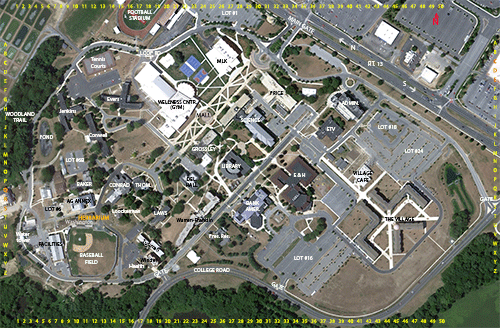*Tilia ×europaea

*Tilia ×europaea
EUROPEAN LINDEN
Tiliaceae
Europe
Location: map coordinates T-10 (north side of Washington Building; near entrance), N 39°11'7'' W 75°32'45''
Planting history: presently unknown.
Description:
*Non-native species (not native to Delaware)
EUROPEAN LINDEN
Tiliaceae
Europe
Location: map coordinates T-10 (north side of Washington Building; near entrance), N 39°11'7'' W 75°32'45''
Planting history: presently unknown.
Description:
- large deciduous tree
- etymology: Tilia = the Latin name; europea = of Europe
- probably a naturally-occurring hybrid between Tilia cordata (littleleaf linden) and Tilia platyphyllos (large-leaved linden), in Europe where the 2 parent species occur
- also called “lime-tree” (in Britain), and “tilleul” in parts of Europe
- leaves simple, heart-shaped
- flowers fragrant, yellowish, in clusters, in spring; attract pollinators like honeybees (hence linden honey). Linden tea made from dried flower clusters; flavorful, and also used medicinally for colds, fever, high blood pressure etc.
- fruit a nutlet attached to a green wing-like bract (modified leaf), which acts like a spinning parachute for seed dispersal
- widely cultivated. (“Unter den Linden” is a famous boulevard in the historic district of Berlin, named for a different linden species, the silver linden, planted there)
*Non-native species (not native to Delaware)


HIT REFRESH TO START LOCATION GRAPHIC